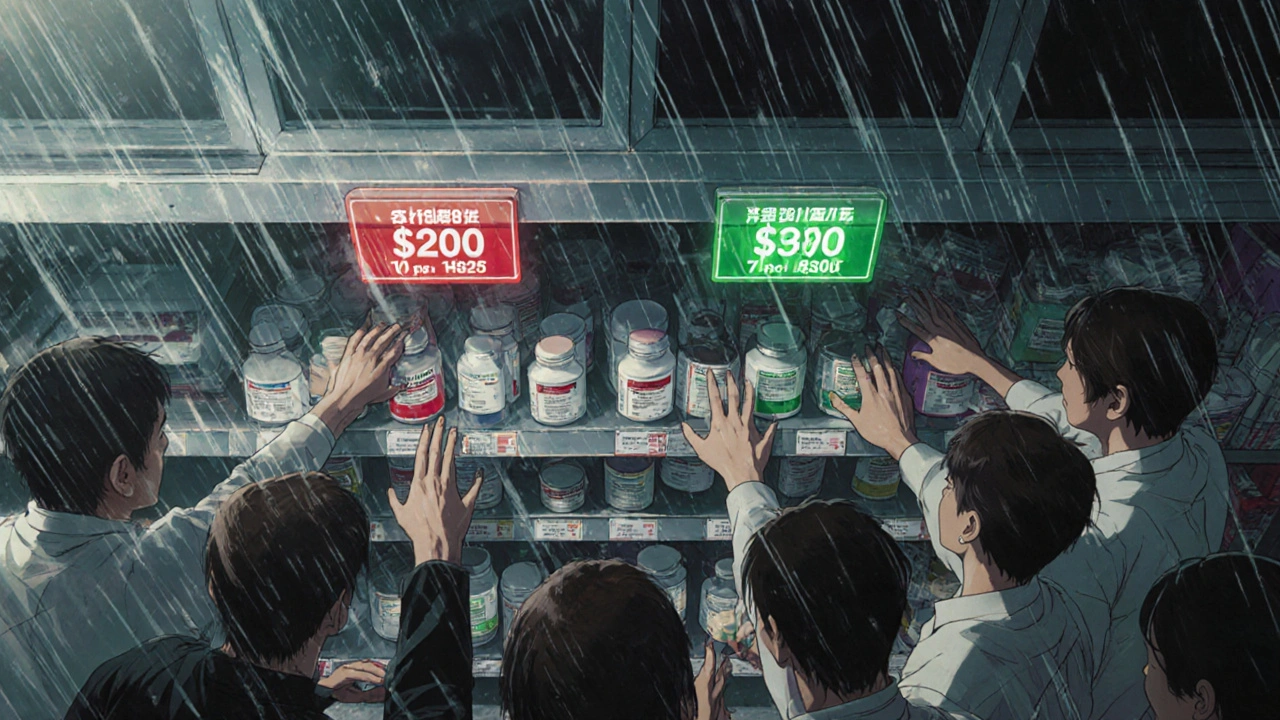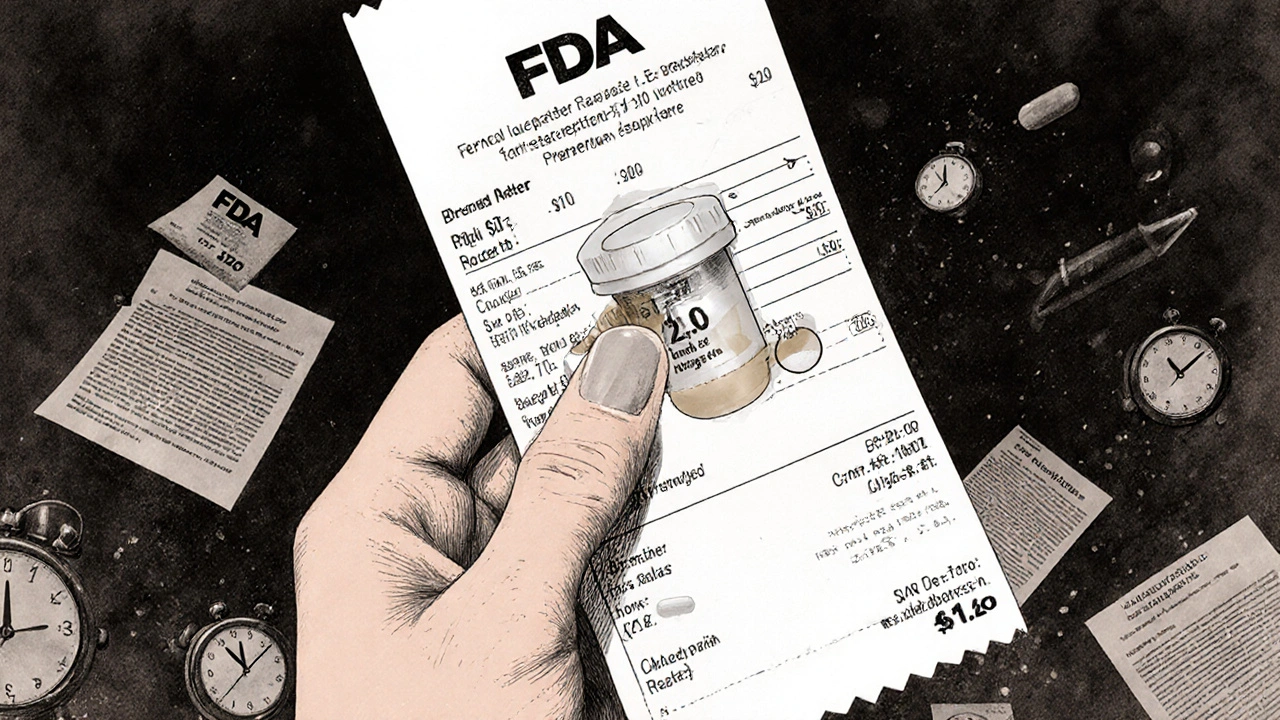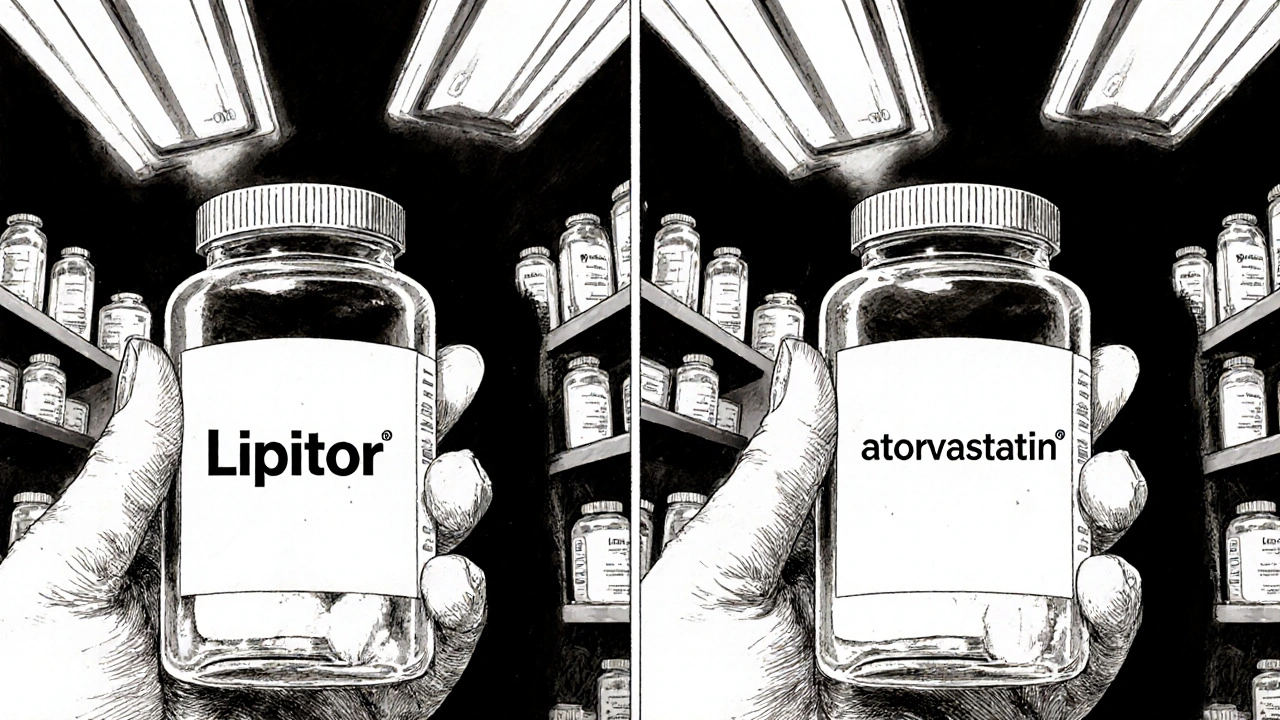When you pick up a prescription for a generic drug, you might assume all generics are the same. But that’s not true. Two very different kinds of generic drugs exist in the U.S. market: authorized generics and first-to-file generics. And the difference between them can mean big savings-or missed savings-on your pharmacy bill.
What Exactly Is an Authorized Generic?
An authorized generic is the exact same drug as the brand-name version, made by the same company, in the same factory, with the same ingredients and packaging. The only difference? It doesn’t carry the brand name. Instead, it’s sold under a generic label, often at a lower price.For example, if you take the brand-name drug Lipitor, the manufacturer (Pfizer) might also sell an authorized generic version under the name "atorvastatin". Same pill. Same bottle. Same manufacturer. Just no brand logo.
These drugs enter the market under the original brand’s New Drug Application (NDA). That means they don’t need to go through the full approval process that regular generics do. They’re already proven safe and effective. So they can launch faster-sometimes even before the first generic competitor hits the shelves.
What Is a First-to-File Generic?
A first-to-file generic is the first company to submit an Abbreviated New Drug Application (ANDA) to the FDA after a brand-name drug’s patent expires. Under the Hatch-Waxman Act of 1984, that company gets 180 days of exclusive rights to sell the generic version before any other generic can enter.This exclusivity isn’t just a reward-it’s a financial jackpot. The first-filer can charge higher prices during those 180 days because there’s no competition. Some companies make hundreds of millions of dollars during this window.
But here’s the twist: the brand-name company can still launch its own authorized generic during that same 180-day period. And when they do, everything changes.
Price Impact: Authorized Generics vs First-to-File Only
The Federal Trade Commission (FTC) studied over 95 drugs to see how prices behave in these two scenarios: when only the first-to-file generic is on the market, and when an authorized generic joins it.When only the first-to-file generic is selling, the average retail price is about 14% lower than the brand-name drug. That’s good. But when an authorized generic enters the market during the same 180-day window, the price drops even further-to 18% below brand price. That’s a 4 percentage point jump in savings.
Pharmacies pay even less. In a market with only one generic, pharmacies pay about 20% below the brand price. Add an authorized generic? That jumps to 27% below. That’s a 7-point increase in wholesale savings.
And it doesn’t stop there. The FTC found that when both generics are competing, retail prices are 4% to 8% lower than when only the first-filer is there. Wholesale prices drop by 7% to 14%. That’s money saved at every level-from the manufacturer to your pharmacy to your pocket.

Why Does This Happen?
It’s simple economics: more competition = lower prices. When two companies sell the same pill, they start undercutting each other to win shelf space and pharmacy contracts.The first-to-file generic doesn’t want to lose its market share. The authorized generic doesn’t want to sit idle. So both drop prices. The brand-name company might even push the authorized generic price lower to keep the first-filer from dominating the market.
Pharmacies notice this too. Their profit per prescription goes up when the first generic arrives. But it goes even higher when the authorized generic joins. That’s because they can buy both at deep discounts and still charge patients less than the brand.
What About Long-Term Prices?
The real magic happens after the 180 days. When more generics enter-say, four or six-the price drops even further. By the time six or more companies are selling the same drug, prices fall by over 95% compared to the original brand.But here’s the catch: if an authorized generic is already in the market during the exclusivity period, it doesn’t just lower prices temporarily. It also weakens the first-filer’s ability to hold onto high prices later. The FTC found that even 30 months after the exclusivity ends, the first-filer’s revenue stays lower if an authorized generic competed earlier.
That’s because pharmacies and insurers remember the lower price. They won’t pay more just because the exclusivity period is over. The market resets at a lower baseline.
Are Authorized Generics Cheaper Than Other Generics?
Yes-and no. Authorized generics are often priced lower than the first-to-file generic during the exclusivity window. But once more generics flood the market, all generics tend to converge at similar low prices.The FTC looked at this closely and found no evidence that authorized generics charge more than other generics after the exclusivity period. In fact, they’re often the first to drop prices when competition heats up.
That’s important. Some people worry that brand companies use authorized generics to crush competition. But the data shows they’re actually helping drive prices down faster.

Why Would a Brand Company Launch Its Own Generic?
It sounds strange. Why would a company help kill its own brand? The answer is strategy.Many brand companies launch authorized generics as part of legal settlements with generic manufacturers. Instead of fighting a long patent battle, they agree to let the generic in-but they also launch their own version to control the market.
This lets them keep some revenue from the drug instead of losing it all to a single competitor. It’s a trade-off: they give up the brand’s monopoly, but they keep a piece of the generic pie.
The FTC found that this practice doesn’t discourage generic companies from challenging patents. Even with authorized generics in the mix, generic firms still file ANDAs at the same rate. So the system still works.
What Does This Mean for You?
If you’re paying for a generic drug, ask your pharmacist: Is this a first-to-file generic or an authorized generic?It’s not always obvious. But if you’re getting a generic version of a drug that just came off patent, and the price is still high, it might be the first-filer with no competition.
Wait a few weeks. If a lower-priced version appears, it’s likely an authorized generic. That’s your signal to switch.
For example, if you’re taking metformin and your pharmacy charges $20 for the first generic, but two weeks later a $12 version shows up, the $12 one is probably the authorized generic. Take it. You’re saving $8 per prescription.
And don’t assume your insurance will automatically pick the cheapest option. Some plans default to the first generic they see. Call your insurer and ask if you can switch to the authorized generic if it’s cheaper.
Is This System Fair?
There’s debate. Some argue that the 180-day exclusivity gives generic companies too much power. Others say it’s necessary to encourage them to take the financial risk of challenging patents.The FTC’s conclusion? The system works. Authorized generics don’t hurt competition-they boost it. Consumers benefit from lower prices during the exclusivity period. The healthcare system saves money. And generic companies still have strong incentives to challenge patents.
What’s more, FDA reforms under GDUFA have cut approval times by about 13 months and lowered costs for generic manufacturers by $3.5 million per application. That means more generics are entering faster, and the market is becoming more competitive overall.
Still, watch out for brand companies that release a new version of the drug-like an extended-release formula-right after a generic launches. That can cut the market for generics by up to 29%. It’s a legal loophole that keeps prices high.
The bottom line? Authorized generics aren’t a trick. They’re a tool that makes the system work better. And if you know how to use them, you’ll pay less.

Kane Ren
November 22, 2025 AT 10:25Wow, I had no idea authorized generics even existed. I always just grabbed the cheapest generic without thinking twice. This is the kind of info that actually saves money-thanks for laying it out so clearly!
Charmaine Barcelon
November 23, 2025 AT 01:03You're all so naive! This is just Big Pharma's sneaky way to keep prices high! They launch their own 'generic' to crush real competitors-don't fall for it!!
Karla Morales
November 24, 2025 AT 06:07📊 FTC data confirms: authorized generics reduce retail prices by 4–8% vs. first-to-file alone. 📉 Wholesale savings jump 7–14%. 🏥 This isn't marketing-it's measurable market efficiency. 📊 #PharmaEconomics
Javier Rain
November 24, 2025 AT 22:41This is the kind of thing that actually matters in real life. I’ve been paying $40 for my blood pressure med for months, then switched to the authorized generic last month-$12. Same pill. Same bottle. Just no fancy logo. 🙌 If you’re not checking this, you’re leaving money on the table.
Laurie Sala
November 25, 2025 AT 15:44But... but... what if they're lying?! What if the 'same pill' isn't really the same?! I've read stories about fillers being different!! I'm so scared now!! 😭
Lisa Detanna
November 26, 2025 AT 18:53As someone who’s lived in five countries, I’ve seen how drug pricing varies wildly. In the U.S., this kind of transparency is rare. The fact that authorized generics exist at all-and that they help lower prices-is actually kind of beautiful. We should celebrate this, not fear it.
Demi-Louise Brown
November 28, 2025 AT 09:08Authorized generics offer a strategic advantage in market competition. Their introduction during the 180-day exclusivity window accelerates price erosion and establishes a lower baseline for future pricing. This dynamic benefits both consumers and payers.
Matthew Mahar
November 29, 2025 AT 05:38wait so the brand company makes the generic too?? i thought they were the bad guys?? this is wild. i just assumed generics were always made by other companies. mind blown. 🤯
John Mackaill
November 29, 2025 AT 16:54Interesting read. I’ve seen this play out with my dad’s cholesterol med. The first generic was $35, then an authorized one showed up at $18. He switched immediately. The pharmacy didn’t even tell him about it-he had to ask. We need better transparency.
Adrian Rios
November 30, 2025 AT 17:14Let’s not oversimplify this. The 180-day exclusivity is a double-edged sword. Yes, it incentivizes generic manufacturers to challenge patents-but it also creates a monopoly window where prices stay artificially high. Authorized generics disrupt that, yes, but they’re also a tool used by brand companies to negotiate settlements and retain market control. It’s not pure altruism-it’s corporate strategy. That doesn’t make it bad, but we should be clear-eyed about it. The real win is when multiple generics enter after exclusivity. That’s when prices truly collapse-sometimes by 95%. So yes, authorized generics help, but they’re just the first domino. We need faster FDA approvals, more generic applicants, and better pharmacy switching incentives to really fix this system.
Casper van Hoof
November 30, 2025 AT 21:17One might posit that the phenomenon described constitutes a form of regulatory arbitrage-leveraging the legal architecture of the Hatch-Waxman Act to preemptively saturate the market with a product that is functionally identical to the branded entity, thereby subverting the intended competitive dynamics of the generic market. The ethical implications are thus not trivial.
Richard Wöhrl
December 1, 2025 AT 21:35Important note: Authorized generics are identical to brand-name drugs in active ingredient, strength, dosage form, and route of administration-FDA requires this. The only difference is labeling. If your pharmacist says it’s an authorized generic, you can trust it. Also, check the NDC code-brand and authorized generic often share the same NDC. I’ve seen patients refuse them because they think ‘generic’ means ‘inferior.’ It doesn’t. Don’t let fear cost you money.